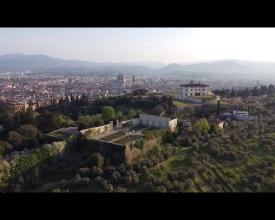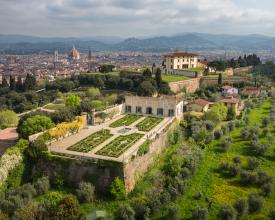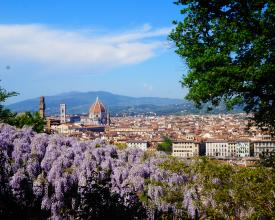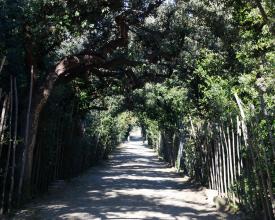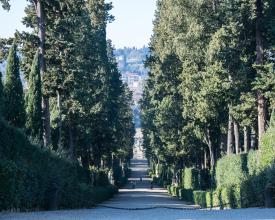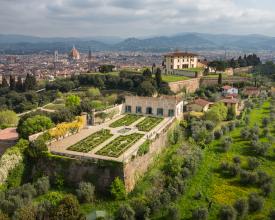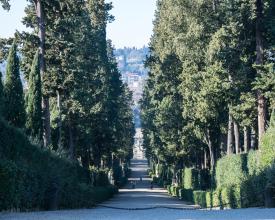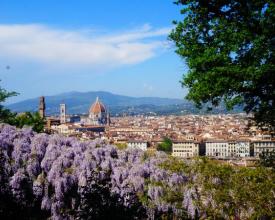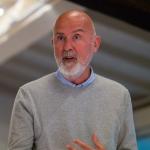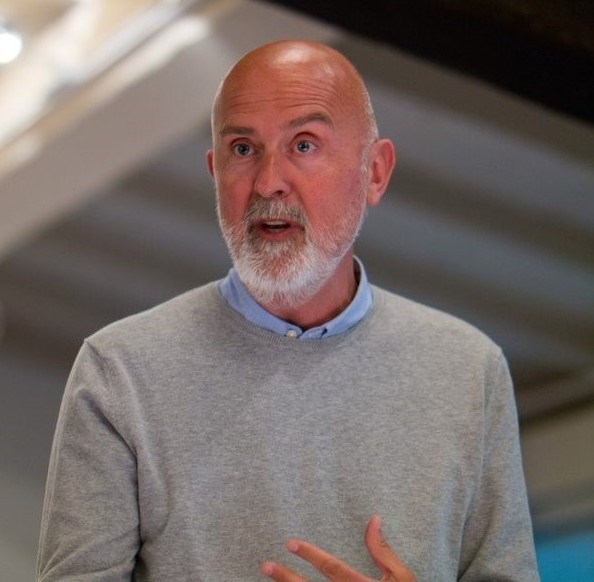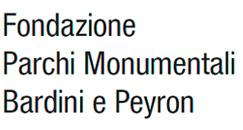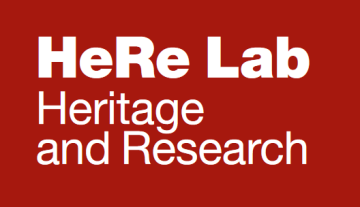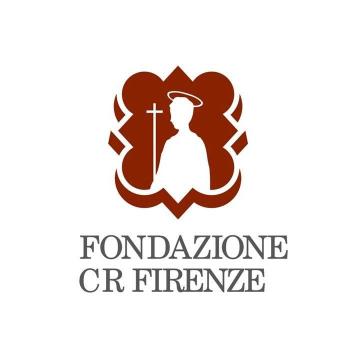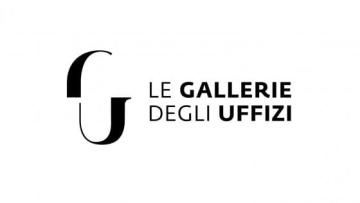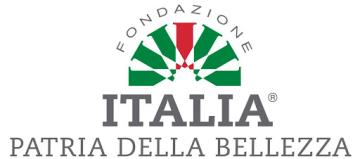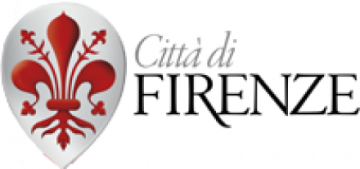
Firenze Greenway: ecological itineraries connecting World Heritage sites and neighborhoods in Florence, Italy
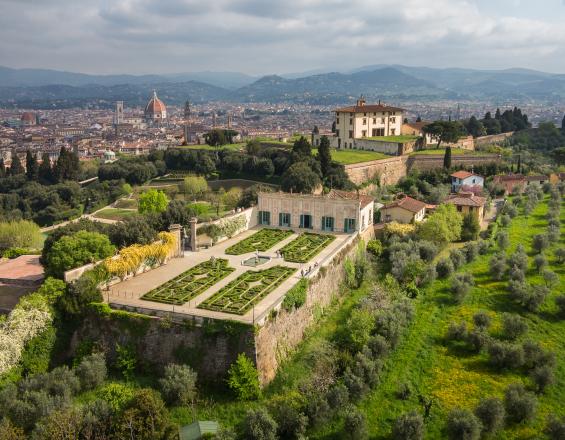
Florence Greenway is a 20-km cultural and ecological itinerary located in the Oltrarno area, a neighborhood south of the World Heritage site ‘Historic Centre of Florence’. The project aims at merging three already-existing itineraries passing through gardens and monuments belonging to different institutions and two World Heritage sites (‘Historic Centre of Florence’ and ‘Medici Villas and Gardens in Tuscany’). The project is enhanced by a series of physical and virtual information material, as well as actions aimed at the requalification and restoration of components of the itineraries. This unique journey constitutes a long-term solution to offer alternative routes centred on slow tourism, sustainability, the rediscovery of green urban areas, and the well-being of visitors. Furthermore, it enriches the relationship between the historic centre, its surrounding landscape and the external neighborhoods, raising awareness of their significance.
Context
Challenges addressed
Environmental challenges
- Urban pollution
- Poor promotion and valorisation of urban green areas, especially those located outside of the historic centre
Social Challenges
- Mass tourism afflicting the historic centre and its carrying capacity
Economic challenges
- Underdevelopment of neighbourhoods and areas surrounding the historic centre, which have less economics opportunities given their location outside of traditional touristic itineraries
Location
Process
Summary of the process
The creation of a Greenway in the city of Florence is placed in the larger framework of the European Greenways, a concept formalised in the Lille Declaration (2000) to enhance urban sustainability and the well-being of residents and city users. The notion of urban countryside (BB1) and its relevance for our societies are the basis upon which the whole project is founded, as it expresses the need to promote and restore urban green spaces. The set of partnerships between Municipality, private actors, World Heritage sites and other stakeholders (BB2) opened avenues for the institutional and practical realisation of the project, which included the realisation of promotional material and the restoration of physical components. Finally, the three itineraries were identified and establishment according to the concept of ‘Promenadologie’, a philosophy that sees the stroll as a tool to experience the environment in alternative ways (BB3), and the creation of a structured wayfinding and signage system (BB4) that led to the identification, restoration and promotion of physical and intangible components to include in the project.
Building Blocks
‘Urban countryside’: an approach to connect nature and culture
The concept of urban countryside is becoming pivotal in recent years as a way to overcome the traditional dualism between city and countryside, encouraging holistic approaches. The creation of itineraries connecting urban green areas, the Historic Centre of Florence and the Medici Villas constitutes a successful approach to experience urban centres in a sustainable way and connect Core and Buffer Zone of the two World Heritage sites. The ‘urban countryside’ has become a solution to address the need for more green spaces within cities, while at the same time placing the well-being of visitors at its core.
Enabling factors
In addition to the establishment and creation of physical itineraries, the enjoyment of the urban countryside and the valorisation of urban green areas is made possible through requalification actions (i.e. the restoration of the ramps through funds provided by the CRF Foundation in 2018). Such initiatives aim at enhancing the significance of neighbourhoods not included in traditional itineraries through the restoration and maintenance of physical components, the installation of signage, as well as a range of research and promotional activities.
Lesson learned
The inclusion of green urban areas in heritage processes and cultural services is a practice that allows for a holistic understanding and enjoyment of urban spaces. Cities are now being regarded not only as an ensemble of built components, but also as the interrelation between nature and men. The well-being of residents can therefore be enhanced through the provision and valorisation of green spaces, enabling them to enjoy alternative, sustainable, and eco-friendly experiences.
Creation of inter-institutional partnerships between authorities, stakeholders and World Heritage sites
Greenway Florence is characterised by the successful coordination of research bodies, the Municipality of Florence, private stakeholders, and heritage institutions, which have formalised an inter-institutional partnership in order to manage, maintain and promote the project. The partners involved include “Firenze Greenway” Association, Fondazione Parchi Monumentali Bardini e Peyron, HeRe Lab - Heritage Research, the Municipality of Florence (Tourism Department, Directorate for Economic Activities and Tourism, Directorate of Culture and Sport, Department and Directorate of the Environment, ‘Florence World Heritage and relations with UNESCO’ Office), Fondazione CR Firenze, and the Uffizi Gallery.
Enabling factors
The governance system and the partnerships between stakeholders are to be formalised by a Memorandum of Understanding and integrated ticketing system, as well as an itinerary through the gardens belonging to various institutions: the Bardini Garden (Fondazione CR Firenze), the Boboli Gardens (Uffizi Gallery) and the Bobolino Garden (Municipality of Florence).
Lesson learned
The Greenway is a successful project that brings together different private and public institutions through a planned Memorandum of Understanding and an integrated ticket. The involvement of all parties and stakeholders has ensured that the itineraries include all the natural and cultural components constituting the itineraries.
‘Promenadologie’ as a philosophy to experience heritage places in alternative ways
The implementation of principles related to slow tourism and the creation of three urban green itineraries (one focused on the Medici town, one on the medieval components, one on the hills and surrounding environment) has also been connected to the concept of ‘Promenadologie’, the science of strolling, a philosophy to enhance environmental perceptions and experiences through walking. In the case of the Greenway, the ‘Promenadologie’ constitutes an alternative way to experience the connection between the two World Heritage sites, as well as the relations between natural and cultural elements, only by foot or bike. The walk becomes a powerful tool to reflect upon the aesthetic and sensorial qualities of heritage and nature, bridging the gap between visitors and the surrounding environment.
Enabling factors
The enjoyment of natural and cultural elements by foot and bike, and specifically through strolls, is made possible thanks to the creation of ad hoc itineraries connecting selected gardens and green areas already known for their aesthetic features. The itineraries connect the Bardini, Boboli and Bobolino gardens, passing through the hills of the Oltrarno district and the Villa di Poggio Imperiale. The walk is further enhanced by the lack of pollution and traffic, placing the well-being of visitors at the core of the project.
Lesson learned
The establishment of connections between World Heritage properties, urban and historic gardens, and lesser known neighbourhoods by means of a walking itinerary has proved to be a successful strategy to encourage sustainable and unique journeys. The science of strolling (Promenadologie) allows for the encouragement of slow and green tourism, the economic and sustainable development of different parts of the city outside of the city centre, and the well-being of users, who are not affected by traffic jams or noise and air pollution. Moreover, the itineraries promote a new way to experience the city without being over-stimulated by sensorial inputs, activities and information in the historic centre, fostering a simpler and internal reflection on the dualism of man/nature.
Wayfinding and interpretation of cultural and natural heritage
The system of signage in place within the Greenway relies on the concept of “wayfinding”, an approach that seeks to organise spaces in order for users to navigate them easily. Within the Greenway, wayfinding has been pivotal to maximise the experience of visitors and enhance their relation to the site. The approach has also been sided by the installation of physical signage guided by the adoption of a Master Plan (2016) and the visibility given by the creation of a website, the development of a guidebook in four languages that also incorporates the EnjoyRespectFlorence campaign, the organisation of guided visits, and the release of videos and flyers. The interpretation of the itineraries is made accessible also thanks to the restoration of their physical attributes such as the ramps, the requalification of new components such as the Forte Belvedere, and the production of historical descriptions inserted in the signage system. Finally, the establishment of a Firenze Greenway Lab gathers students, graduates and professionals working together for the urban and environmental planning of the project.
Enabling factors
The installation of signage for interpretation and wayfinding was made possible through the formalisation of the Master Plan following the establishment of interinstitutional partnerships and the availability of financial support provided by the CRF Foundation.Additionally, the principles of the Lille Declaration (2000) guided the efforts for the institutionalisation and composition of the Greenway; and finally the communication strategies and the website enhanced and broadened the accessibility of information and signage.
Lesson learned
Thanks to these initiatives, the understanding of the three itineraries composing the Greenway has been enhanced and disseminated to the wider public. The importance of both the physical signage and the virtual information was highlighted thanks to the website provided in Italian and English and the production of ad hoc guidebooks in different languages. Planning the itineraries and the related signage system also opens new avenues for the inclusion of additional components enriching the itineraries, which are therefore exposed to positive works of restoration and requalification. A case in point is the Forte del Belvedere, a fortress that benefited from a change of ownership: as a public good, the building is now open to the public, adding value to the project and constituting one of the main attractions of the Greenway. Finally, the COVID-19 pandemic has highlighted the importance of these green urban spaces for the well-being of residents and city users, with its significance adequately communicated on virtual platforms.
Impacts
Environmental impacts
- Requalification and restoration of elements in the itinerary that had been previously neglected and overlooked
- Re-discovery of agricultural and cultural landscapes and urban green spaces, with the consequent promotion of underrepresented categories of heritage and narratives
Social impacts
- Promotion of sustainable and alternative itineraries for both residents and visitors, in the framework of slow tourism to implement a safe and healthy city. The Greenway helps improve health conditions, with good economic benefits
- Improved health and psycho-social well-being of residents, visitors and city users alike
- Re-establishment of the relationship between the city and its surrounding environment, reinforcing the connection between nature and culture
- Creation of a green path connecting two World Heritage sites, the Historic Centre of Florence and the Medici Villas
- Improved communication between different stakeholders and enhanced connection between people and places
Economic impacts
- Improved management of touristic flows
- Improved economic development in the Oltrarno area, thus outside of the traditional touristic circuits in the historic centre
Beneficiaries
- Citizens of Florence (residents and city users)
- Visitors
- Students and academics
- City users with restricted mobility
Sustainable Development Goals
Story
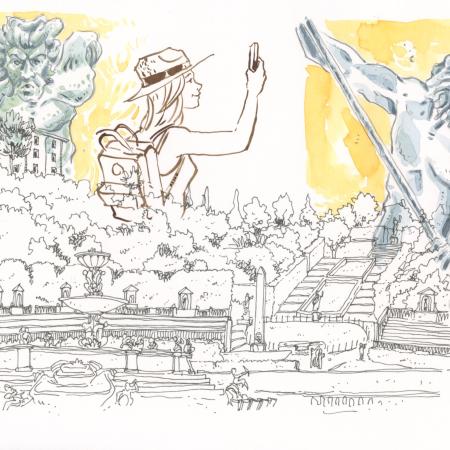
“Il taccuino del viaggiatore - Una giornata nella Greenway” is a story illustrated by Gabriele Genini and written by Maria Chiara Pozzana, a testimony to the experience of navigating the Greenway and benefiting from its environmental and cultural values. The story has been written while walking through the Greenway and enjoying its cultural, historical and ecological itineraries.
The publication can be found at: https://www.firenzegreenway.com/il-taccuino-del-viaggiatore/

